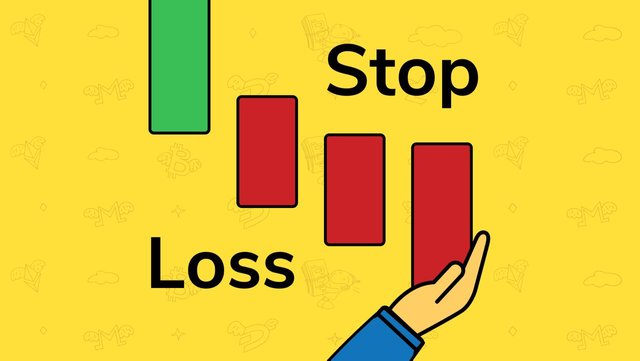
As you know, various scenarios might unfold in the crypto market, so it is sometimes difficult to avoid losses. Yet, the stop-loss feature can at least reduce the amount of your loss.
So, what is “stop-loss”?
Stop-loss is a trading tool that was developed to limit the maximum loss of a trade by automatically liquidating assets as soon as the market price reaches a set value.
Several types of stop-loss orders can be used in different scenarios depending on the situation in the crypto market.
When is stop-loss used?
By contrast to a limit order that profits from current trends, a stop-loss order is used to limit potential losses to no more than a trader can take on.
To effectively use a stop-loss, the trader still needs to predict how the market will behave and adjust stop-loss according to these forecasts. As soon as the trader knows how the market will behave, they must choose a value and a type of stop-loss order that they want to use.
Stop-loss types
Full
When triggered, a full-stop loss liquidates all the position. It is very helpful when the market is expected to be stable but, then, suddenly, prices shift.
Partial
When triggered, this kind of stop-loss eliminates a specified proportion of the digital assets. This is useful when the market is highly volatile. And in this case, stop-loss ensures that the trader still has some assets left on their account.
Trailing stop-loss
Here, the trader configures the trailing distance, which is the difference between the current asset price and the stop-loss value. If the value of the cryptocurrency increases, then the trailing stop-loss value will also grow with it. If the price falls, the trailing stop-loss order will not act on it until the set minimum value is reached.
Risks
If the market is volatile, the trader may lose out on a price surge beyond the stop-loss value.
There is also a risk of loss if the stop-loss value is too low, so the price drop does not reach it, and then goes back to a steady trend after the fall.
Trailing stop-loss is a potential liability in the strong uptrends. A partial stop-loss is less useful in a stable market than when trading with very volatile new coins.
To conclude, almost all risks arise from a wrong choice of the type and the value of the stop-loss order, so try and conduct correct market analysis.
Newbie tactic?
When professionals use stop-losses, it turns into a priceless tool that saves both time and money. Using it without understanding the purpose of it might cause damage. However, novice traders can benefit as much from this while adhering to the strategies that they understand well and managing their assets intelligently.